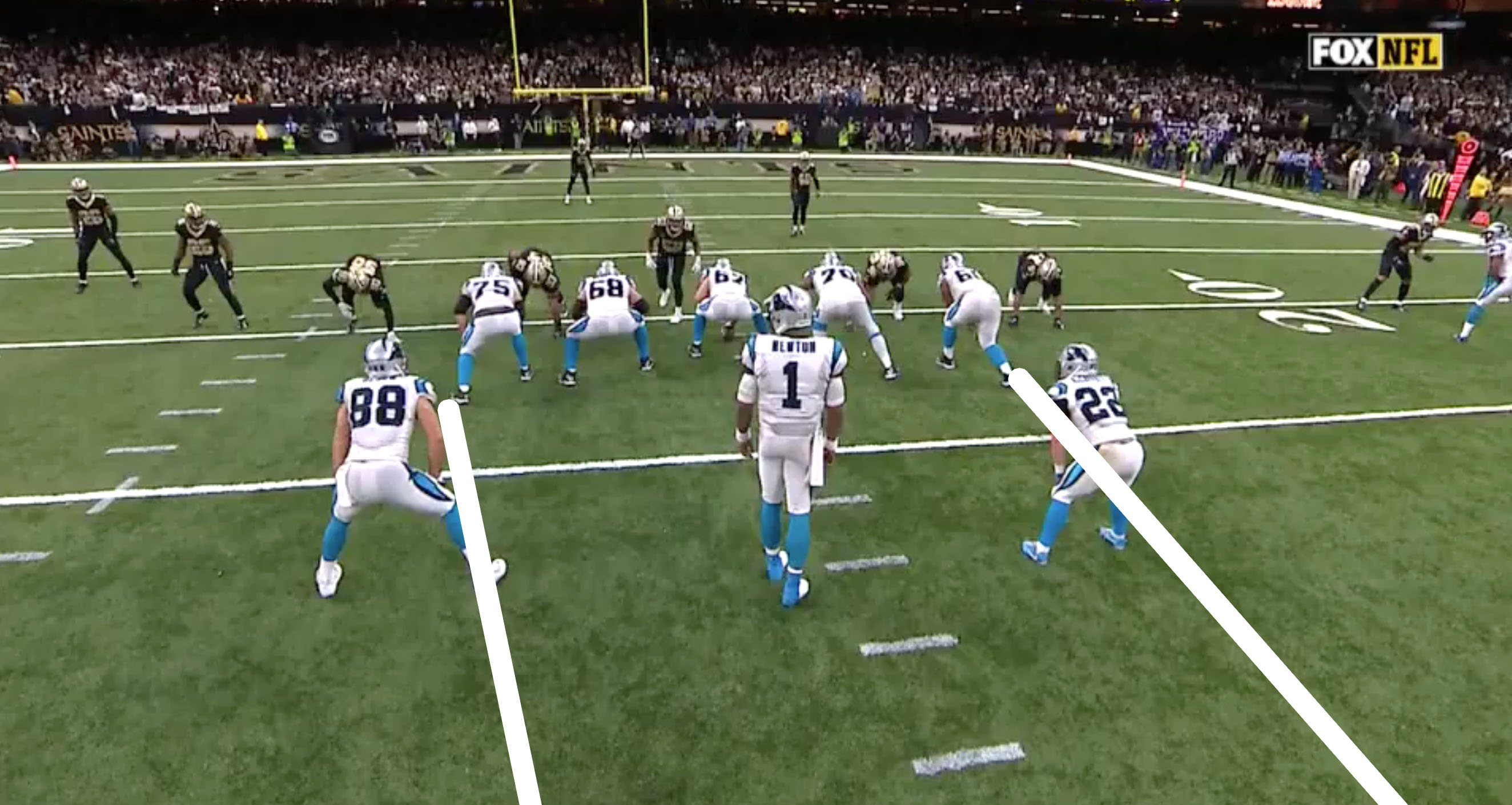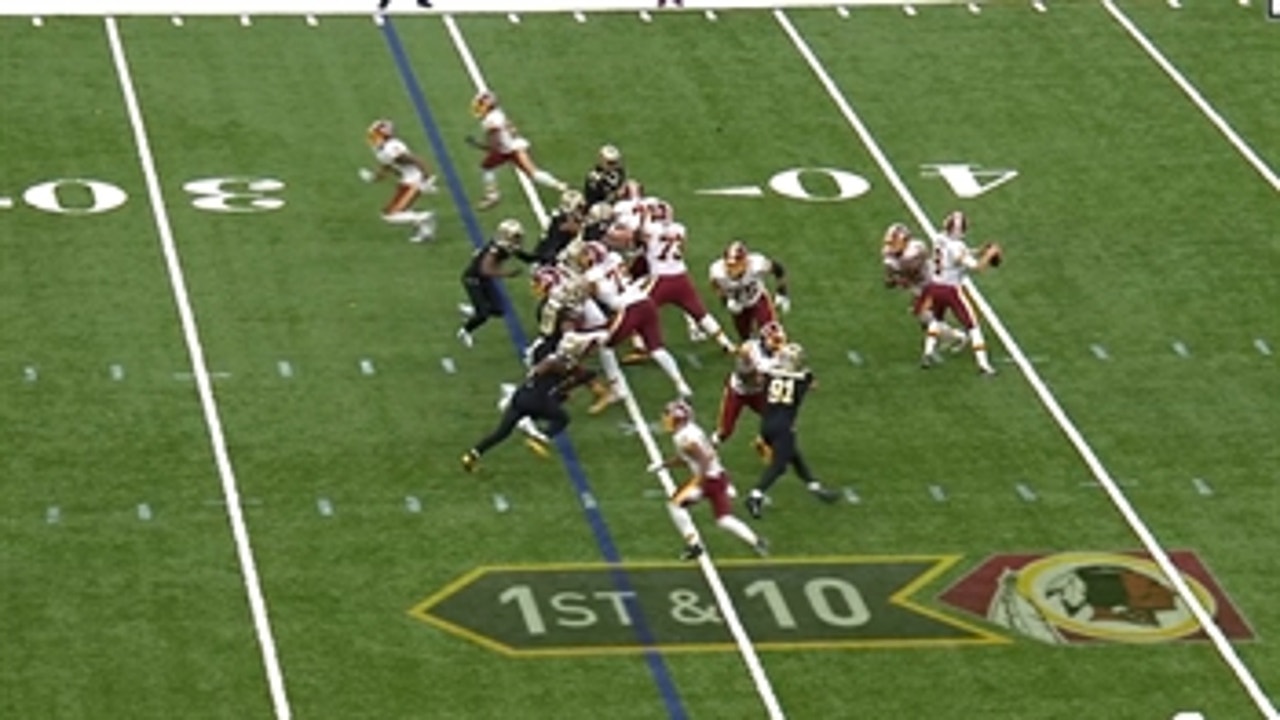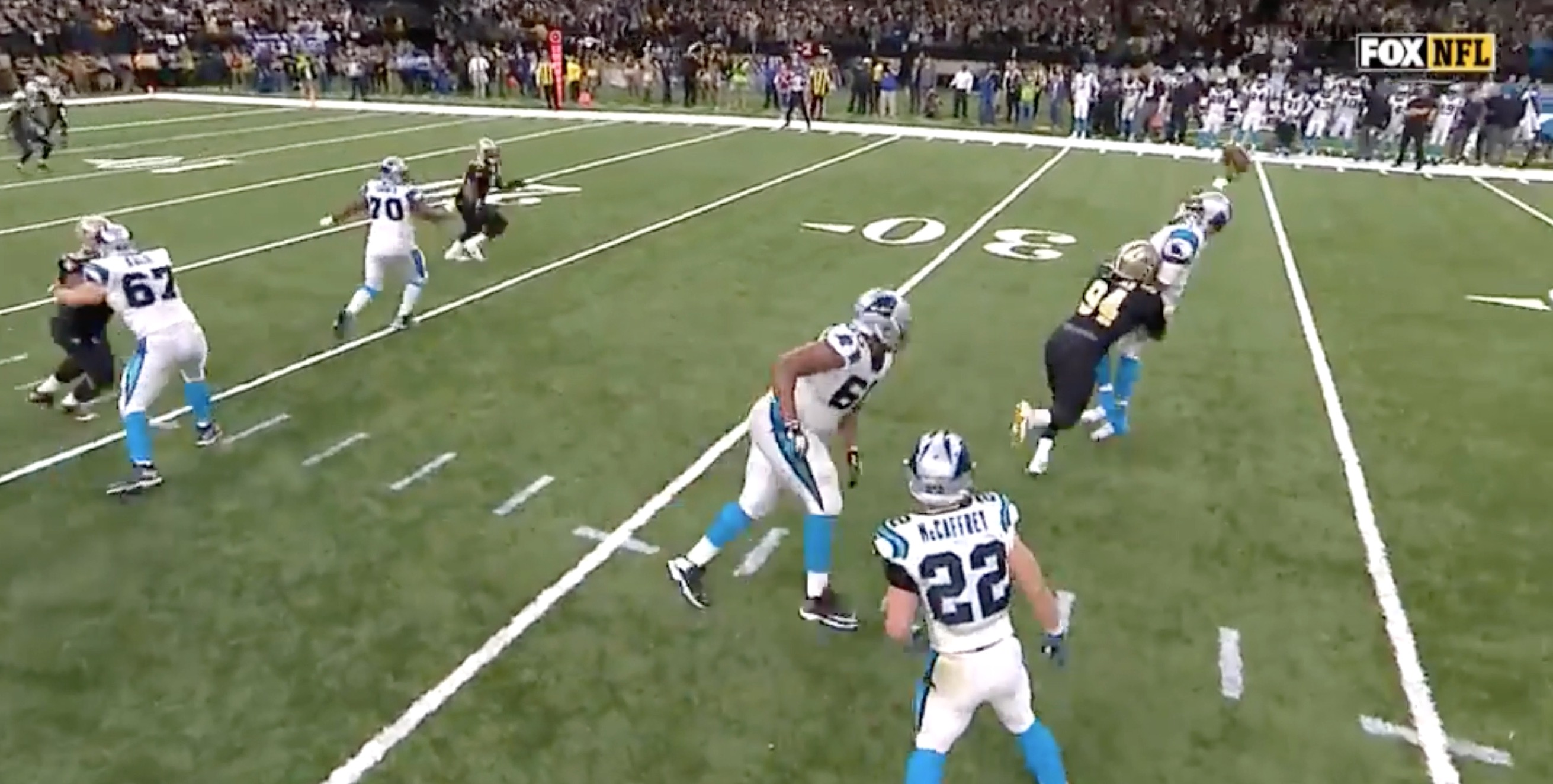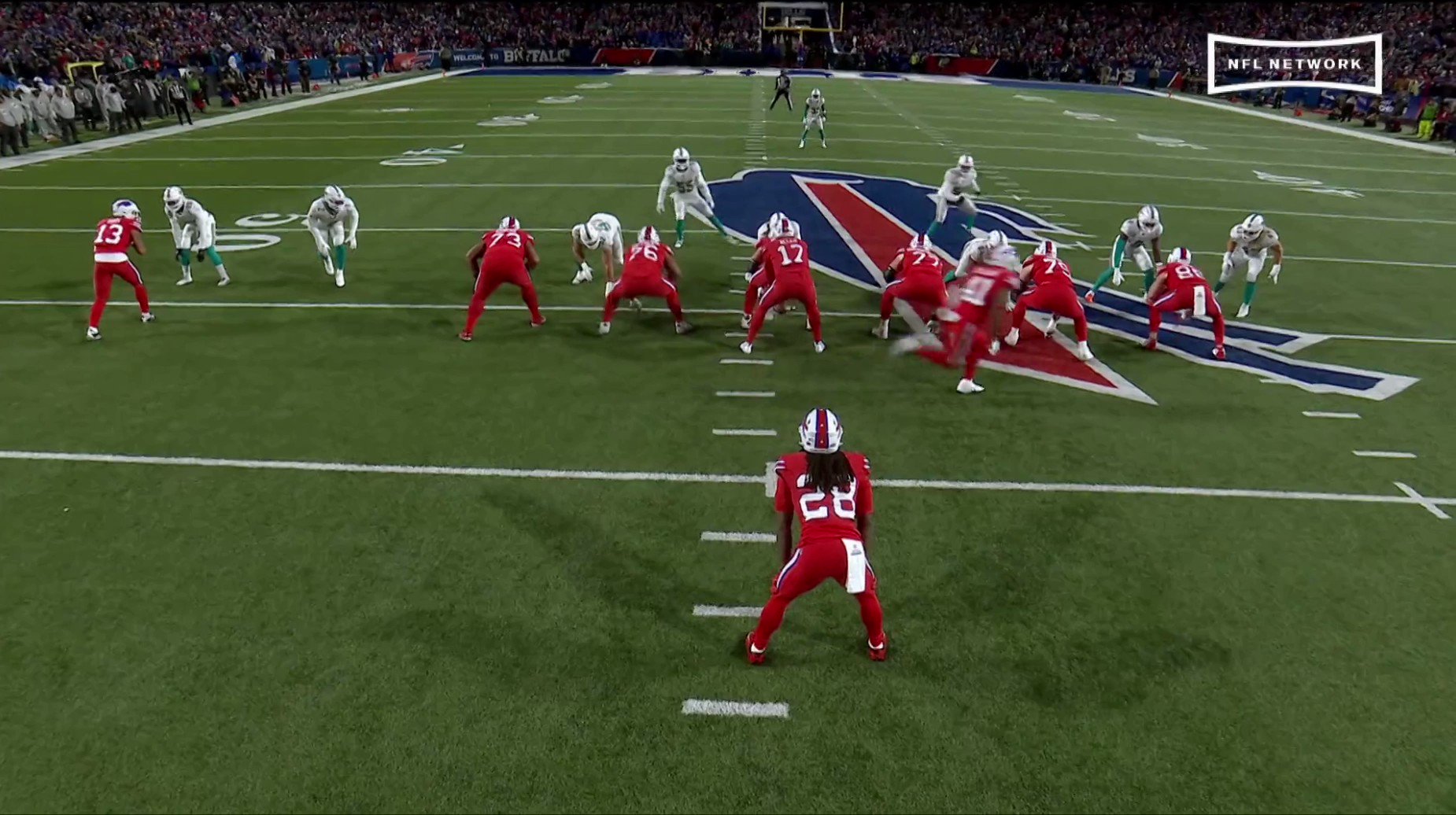Intentional grounding is a critical rule in the game of football, designed to maintain the integrity of the sport and deter quarterbacks from making unrealistic throws to avoid losing yardage. This foul occurs when a quarterback, under pressure from the defense, throws a forward pass outside the range of an eligible receiver, with the ball potentially going out of bounds, past the end of the end zone, or far from any receivers.
The penalty for intentional grounding can have significant consequences for the offending team, as it results in a loss of 10 yards and a loss of a down in the NFL. This rule is consistent across all levels of football, helping to ensure fair play and sportsmanship throughout the game. It is crucial for players, coaches, and fans to understand the purpose and implications of intentional grounding to appreciate the strategic elements of football fully.
In this guide, we’ll explore the details of intentional grounding, its history, and its impact on the sport. By examining its intricacies and significance, readers will gain an in-depth understanding of this crucial aspect of football strategy and gameplay.
Understanding Intentional Grounding
Definition
Intentional grounding is a specific violation in gridiron football that occurs when a passer, typically a quarterback, throws a forward pass without a realistic chance of completion. This can happen when the quarterback is about to be sacked and throws the ball towards an area of the field with no eligible receiver. The rules for intentional grounding are consistent across all levels of football, but the resulting penalty may vary slightly depending on the league, such as the NFL or college football.

Purpose
The primary purpose of the intentional grounding rule is to prevent the quarterback from avoiding a potential sack or loss of yardage by throwing an incomplete pass that has no chance of being caught. This maintains a competitive balance and fairness among teams by forcing the passer to either find an open receiver or risk being sacked.
In the NFL, the penalty for intentional grounding always results in a loss of 10 yards and a loss of a down for the offense. For example, if intentional grounding occurs on a 2nd-and-6 play, the next play would become 3rd-and-16. In college football, the penalty varies slightly but still enforces the same principle of preventing the passer from evading pressure through unrealistic passes.
By understanding the definition and purpose of intentional grounding, readers can better grasp the rationale behind this specific rule in football and appreciate its role in maintaining the integrity of the game.
Rules and Penalties
Specific Conditions
Intentional grounding occurs when a passer, facing an imminent loss of yardage because of pressure from the defense, throws a forward pass without a realistic chance of completion. A realistic chance of completion means that the pass must:
- Be thrown in the direction of an originally eligible receiver
- Land in the vicinity of that eligible receiver
In essence, the rule exists to prevent quarterbacks from making unrealistic throws to avoid losing yardage from being tackled by the opposition.
Consequences for Violating
The penalties for intentional grounding differ slightly depending on the level of football being played:
- NFL: An intentional grounding penalty always results in a loss of 10 yards and a loss of a down for the offense. For example, if an intentional grounding occurs on a play that began as 2nd-and-6, the next play would be 3rd-and-16.
- NCAA: In college football, the penalty for intentional grounding is a 10-yard loss from the spot of the foul.
These penalties serve to discourage quarterbacks from attempting unrealistic throws solely to avoid losing yardage, and help maintain a fair and balanced game.

Strategies and Tactics
When to Use Intentional Grounding
Intentional grounding is a tactic used by quarterbacks when they are under pressure from the defense and need to avoid a sack or loss of yardage. This maneuver involves throwing the football forward without a realistic chance of completion, so it is a risky play that should be used sparingly.
Some scenarios when intentional grounding might be used include:
- When the quarterback is about to be sacked and there is no eligible receiver available to catch the pass
- When the quarterback needs to stop the clock and there are no timeouts left
Keep in mind that intentional grounding is a last resort and should only be used when there are no other options available.
Avoiding Penalties
Using intentional grounding can result in penalties if not executed correctly. Here are some guidelines to help avoid these penalties:
- Make sure the quarterback is outside the tackle box before attempting intentional grounding. This is the area between the two offensive tackles, and if the quarterback is outside this zone, they can legally throw the ball away.
- Ensure the football crosses the line of scrimmage. To avoid a penalty, the ball must pass the line of scrimmage after it is thrown.
- Target an eligible receiver. If the quarterback can locate an eligible receiver in the vicinity of the pass, they can avoid the penalty.
As intentional grounding can result in a loss of yardage and a loss of a down, it is crucial for quarterbacks to understand these rules and execute the maneuver appropriately.

Notable Examples
Famous Incidents
One famous incident of intentional grounding occurred during Super Bowl XLVI between the New York Giants and the New England Patriots. With less than a minute left in the game, Patriots quarterback Tom Brady threw a deep pass down the field on the first play of the drive. However, there were no receivers in the area, and he was flagged with intentional grounding, resulting in a loss of down and a safety. This crucial play ultimately helped the Giants secure their victory.
Another notable example took place in a 2020 NFL game between the Denver Broncos and the Kansas City Chiefs. Denver quarterback Drew Lock was facing intense pressure from Kansas City defenders when he threw the ball away, trying to avoid a sack. The referees called intentional grounding, which led to a critical fourth down conversion by the Chiefs offense. Kansas City ended up winning the game, sparking discussions around the league on the impact of intentional grounding calls.
Controversial Calls
- Case 1: In 2012, a controversial intentional grounding call took place at the end of a game between the Detroit Lions and the Houston Texans. Lions quarterback Matthew Stafford attempted a pass to wide receiver Calvin Johnson, but it was ruled incomplete by the officials. As there were no other eligible receivers in the area, the officials flagged Stafford for intentional grounding, leading to a critical loss of yardage and ultimately contributing to the Texans winning the game.
- Case 2: During a 2016 game between the Seattle Seahawks and the New Orleans Saints, the intentional grounding rule came under scrutiny once again. With less than two minutes remaining, Seahawks quarterback Russell Wilson threw the ball away under pressure, but there were no eligible receivers in the area. Some felt the call was justified, while others argued that the rule should be more flexible to avoid penalizing quarterbacks for making difficult decisions under pressure.
These incidents highlight the various ways intentional grounding has impacted football games, both in terms of critical and controversial calls. Each example serves as a reminder of the importance of understanding and adhering to the rules, as well as the ongoing debate surrounding the intentional grounding penalty.

Conclusion
Intentional grounding is a strategic yet sometimes controversial play in football. It occurs when a quarterback, under pressure from the defense, throws a forward pass without a realistic chance of completion in an attempt to avoid a loss of yardage. Penalties for intentional grounding vary depending on the level of football being played.
In the NFL, intentional grounding typically results in a loss of 10 yards and a loss of down for the offense. For example, if intentional grounding occurs on 2nd-and-6, the next play will be 3rd-and-16. In college football, the penalty extends to the next play occurring at the spot of the foul, along with a loss of down.
Rules for when a passer commits intentional grounding are clear across all levels of football. Knowing when a passer has committed intentional grounding, and understanding its consequences, can help players and fans alike better navigate this strategic decision within the game of football. With these considerations in mind, intentional grounding is an essential aspect of the sport that adds to its tactical depth and excitement.
James is a big time NBA Golden State follower, who makes sure to catch games when he's in the area. He likes to follow International Soccer, with an interest in small town soccer club, Blackburn Rovers located in the North on the UK.

